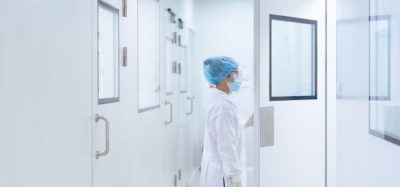HVAC energy savings in the pharmaceutical industry
Posted: 23 November 2007 | Ulla Thomsen, Project Manager, Novo Nordisk | No comments yet
Proper and compliant HVAC systems are fundamental to the pharma industry as we use high air change rates to secure a low viable and particle contamination. HVAC is energy consuming and therefore the HVAC accounts for a large proportion of the energy used in pharma facilities. In the past the energy savings issue was not widely acknowledged; managers wanted to see good compliance and high levels of production and spending time to save money; push for greater sustainability was not really welcomed. Now things have changed and there is a readiness to look at these issues, especially when it is proven that GMP and sustainability are not contradicting and on occasions, can go beautifully hand in hand.
Proper and compliant HVAC systems are fundamental to the pharma industry as we use high air change rates to secure a low viable and particle contamination. HVAC is energy consuming and therefore the HVAC accounts for a large proportion of the energy used in pharma facilities. In the past the energy savings issue was not widely acknowledged; managers wanted to see good compliance and high levels of production and spending time to save money; push for greater sustainability was not really welcomed. Now things have changed and there is a readiness to look at these issues, especially when it is proven that GMP and sustainability are not contradicting and on occasions, can go beautifully hand in hand.
Proper and compliant HVAC systems are fundamental to the pharma industry as we use high air change rates to secure a low viable and particle contamination. HVAC is energy consuming and therefore the HVAC accounts for a large proportion of the energy used in pharma facilities. In the past the energy savings issue was not widely acknowledged; managers wanted to see good compliance and high levels of production and spending time to save money; push for greater sustainability was not really welcomed. Now things have changed and there is a readiness to look at these issues, especially when it is proven that GMP and sustainability are not contradicting and on occasions, can go beautifully hand in hand.
When designing facilities with sustainability in mind, we are often met with the assumptions that it means larger investments. But while a sustainability perspective on design in some cases causes increased investments, it can be proven that this perspective can in some areas actually reduce investment costs. In this article, implemented and planned energy savings on a Novo Nordisk aseptic filling plant will be described. Special attention will be given to sub-projects, demonstrating unison in GMP and energy considerations and showing how sustainable design can also mean cheaper design.
The filling plant in question has approximately 40 grade C and B rooms and 10 – 15 grade A and C UDF modules. The project core group for the HVAC energy savings project includes; utility, HVAC re-qualification (GMP) and hard core energy saving competencies. Involving all of these perspectives from the beginning of each sub project is key to the success of the project. Being able to create each sub project with both the GMP and technical perspective in mind from the outset is highly productive; many other energy projects have had a lesser impact because they were rooted outside of the powerful GMP core of the organisations.
Some of the savings implemented
One of the sub-projects that can only be implemented with the GMP perspective built in from the very beginning is reduction of energy consumption on UDF modules by reducing the velocity. When this was first done on a large grade A UDF, we coupled the energy perspective with GMP improvements in the execution and documentation of the smoke studies by strengthening the “aseptic interventions” in part of the study and by implementing a “bracketing” philosophy documenting the lower and upper limits of acceptable air velocities. It is often thought that “more is better”, but the smoke studies clearly demonstrated that this is not necessarily the case. At the higher end of the scale the limiting factor was the tendency to create turbulence with too high velocities. The results demonstrated more than a 30% reduction on power for the fan and electrical power for the cooling machine. In absolute figures the net savings were more than 250MWh / year on the first UDF module. There were spin offs as well: the noise reduction in the room made operators more content and the reduced velocity has a positive impact on filter leakages and thus time spent on re-qualification was slightly reduced.
LEAN processes are widespread in the pharma industry. In our facility these initiatives have reduced the number of people entering and working in the aseptic core. In the past this would not have led to any reduction in the air change rate because there was only one way for the parameters giving good GMP adherence: up, up, up. Now times are changing and we have used the opportunity to reduce the air change rates in parts of the aseptic core. The actual air change reduction was not very large, nevertheless the results showed a reduction of fan energy consumption of more than 100MWh / year and further to this the energy consumption for heating, cooling and (de-) humidification were also reduced.
One of the thrilling perspectives when working in the pharmaceutical industry is that we have such large amounts of data to work with. Using the data correctly can be challenging and to this end we have joined forces with the QC department. They are evaluating whether or not there are negative impacts of the changes we implement with the aim of energy usage reduction. The air change rate reduction is subject to intense QC scrutiny and so is the sub-project that now shows the largest savings potential of them all: extending the acceptance interval for humidity. The first part of this subproject has been to extend the interval for humidity in parts of the grade C areas from 43 – 57% relative humidity to 33 – 67%. The reduction in energy consumption is approximately 550MWh / year. We are following up on any potential negative effects of this change for approximately a year before we implement a similar change on the air for other areas. When we extend the humidity interval in the grade A and B areas we are likely to not allow quite as large a “window”. However since the window is non- existent today, the savings will be immense. All together the humidity sub-project is expected to yield savings of 2200MWh/ year when fully implemented and followed up by technical optimisation of the clean steam generator.
Further perspectives for humidification
A potential further saving in terms of humidification of air in the pharma industry is limiting the use of clean steam. I believe that most of the industry over the past year has been on the move towards the use of clean steam for humidification. Maybe it is time to stop and rethink. Maybe we can gain savings with no risk if we make a clearer the distinction of when we use the more expensive clean steam and when we could use raw steam instead. There is even a current discussion as to whether or not clean steam is necessary at all, so maybe we just have to be careful with the additives used in raw steam generation? I do not know where this discussion will lead us. Right now my recommendation is to look into whatever additives are used and go for raw steam where there is no product contact and clean steam where there is.
Since the efficiency factor for clean steam generation is in the range of 0.8 (at the best), the immediate savings, by changing humidification from medium to raw steam, would be 25% on the energy bill. Further to this there is a reduction in investments and maintenance costs.
Another energy and maintenance saving possibility is to look for a “steam for humidification” solution that is not clean steam in expensive autoclave quality nor raw steam with its possible additive challenges, but an intermediate – a separate steam system in stainless steel powered by raw steam.
Technical fixes
There are some purely technical improvements that can give satisfactory savings. While we maintain some screening and improvement in this field, such as improvement of clean steam generator stand by function and screening for increased use of free cooling, most of our initiatives are not to do with technical optimisations. There are two reasons for this: the first is the number game – the largest potential energy savings in our industry emerges when we look into our GMP perceptions and critically ask ourselves if a KWh used in this or that way actually improves real quality and is really needed to comply with the GMP requirements. The second reason for not spending much time on the solely technical energy saving issues is that by focusing more on issues that deal with GMP perceptions and other quality aspects, we are breaking new ground and thus creating a larger portfolio of ideas for other Novo Nordisk (filling) plants.
One of the initiatives that lie in between the technical optimisation and the closer scrutiny of GMP and quality requirements is optimisation of filter configuration.
An optimisation of filter configuration was performed on some of the Air Handling Units. Inline HEPA filters were taken out of some grade C AHU’s with very good subsequent terminal HEPA filters. Some G5 pre-filters were removed to instead put load on the F7 filter with larger filter media area and some F9 filter banks changed position so the total number of F9’s in each bank was increased. At the same time each F9 filter was changed to a type with larger filter media area. All in all we gained a considerable reduction in working pressure for the fans and thus a reduction in the energy consumption. The size of this has to be evaluated over time as we see the new dP increase picture for our air handling units.
Demand controlled ventilation
Demand controlled ventilation is one of our current initiatives. It is one which we expect to be in great demand within all company production sites, not purely the filling plants.
Since the primary source of contamination in clean rooms are humans, the air change rates needed for the maintenance of the clean room conditions vary greatly depending on whether or not there are people in the room. The principle can be applied in a number of different ways. My favourite is the use of separate ventilation systems: one system for room pressurisation and primary clean up of the air and the other system for the major part of the room clean-up. With ventilation built this way the more expensive part of the air conditioning with pre-filters, F9’s, heating, cooling and (de-) humidification, is restricted to a smaller volume of air in units that are typically centralised. Therefore, cleanup can be dealt within local recirculation units placed near the point of use. These local units will only consist of a fan, a cooling surface and an F9 pre-filter for the terminal HEPAs. There are several benefits:
- less air is treated the “expensive way”
- less air has to be moved in extensive ducting systems and therefore investments can be reduced
- since the clean up is dealt with independently of the room pressurisation, flexibility is increased and actual demands are more easily accommodated while also saving energy
An example of the use of such a system could be our locker rooms between rooms of different grades. The personnel-generated contamination is especially high in these rooms and we would sometimes like very high air change rates in order to deal with this contamination. When having the separate systems this wish can be accommodated and we can save energy at the same time as we reduce the air change rates after personnel have left the room and the measured recovery time has passed. This is the day to day perspective, but we also have unwanted environmental impacts on our facility, such as higher load of mould in the air for some weeks. Why not meet these higher loads with higher protection in terms of increased air change rates?
When we first looked into the possibility of demand controlled ventilation the idea was to use PIR sensors to detect human activity, but we were not sure they would give us sufficient safe guard against having humans in the room without the ventilation being on “high”. Therefore we contacted a security company and we are now looking at a camera solution. We have planned to install the detection system for a period of time without using the signals to control the ventilation. Doing this we gain experience without jeopardising production.
Sometimes I’m met with the argument that re-circulation should not be used – it should in some ways be only second to full fresh air supply. If there are no gaseous substances, why should re-circulation should be subordinate to full fresh air supply? In general the air will never be cleaner than when it has been through one or two sets of HEPA / ULPA filters and I believe that the hostility to recirculation is a specific Danish phenomena that we can hopefully deal with in the years to come.
Recommendations for the filling facility that wants HVAC to go green
In terms of organisation the most important issue is to include the people with the best technical skills and people with good understanding of the HVAC GMP requirements as well as the parameters affecting actual HVAC quality.
Some key actions in reduction of HVAC energy consumption are:
- check if too stringent demands are made for (de-) humidification
- check if areas can be down classified, lower classes are allowed higher particle and viable content in the air and is therefore cheaper to maintain
- use recirculation
The above mentioned actions could lead to considerable reduction of HVAC energy consumption. However, it is a problem in our industry that changes are quite time consuming in terms of the CR cases and other documentation that must be made. When people have realised the potentials in this field they will be more willing to work on it. In terms of investments, the initiatives carried out in the current project have had a pay back time of less than 2 months, and even if counting internal costs I expect we would still be seeing pay back time of far less than one year.
Ulla Thomsen
Project Manager, Novo Nordisk
Ulla Thomsen works in the field of ventilation and cleanroom validation within Novo Nordisk. From 2003 to 2006 she headed an effort to gain more production time through revamp of the cleanroom revalidation program and reorganisation of the test. She has been involved in writing the overall Novo Nordisk cleanroom procedure for the test of cleanrooms. Presently Ulla is in charge of an HVAC energy saving pilot project for filling plants looking at optimisation possibilities from both a technical and GMP perspective. She holds a Master in mechanical engineering from the Technical University of Denmark.








